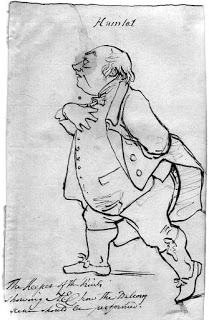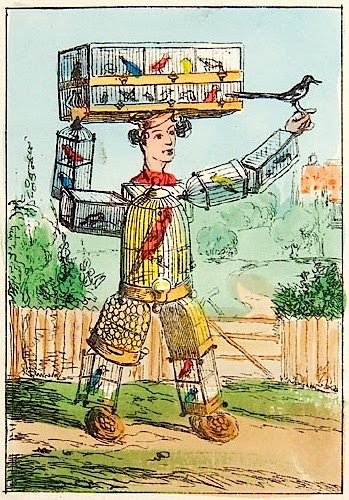 |
| ‘The Keeper of the prints showing A.E.C. how the Balcony scene should be performed' (Pen and ink drawing by Edward Chalon) |
One of the most famous Keepers of Prints at the British Museum was John Thomas Smith (1760 - 1833), who was also a gifted amateur artist, an antiquary, and a writer on art and artists, whose two most acclaimed books were the scurrilous Nollekens and his Times (1828) and the exceedingly scarce and sought after Vagabondiana (1817), which contains forty or more etchings of well known mendicants in the metropolis based on his own sketches.
But in his early days Smith had hopes of becoming an actor, and in 1787 was promised an engagement with the Royalty Theatre in London. Unfortunately, this fell through and he set up as a drawing master instead. But if the portraitist Alfred Edward Chalon (1780 – 1860) is to be believed, Smith retained an interest in performing throughout his life. Here we have a pen and ink drawing by Chalon of the Keeper as a distinctly middle aged and podgy Hamlet. It may have been sketched following the publication of the sitter’s biography of the brilliant sculptor Nollekens, which portrayed him (possibly with truth) as a miserly curmudgeon. It has been said that Smith decided to write the book--dubbed ‘the most candid biography in English literature’--after the disappointment of not receiving the generous bequest he had been led to expect from his friend.
Smith died in harness aged just 66 in 1833. A Book for a Rainy Day, which contained his largely unpublished writings appeared posthumously.
[R.M.H]




